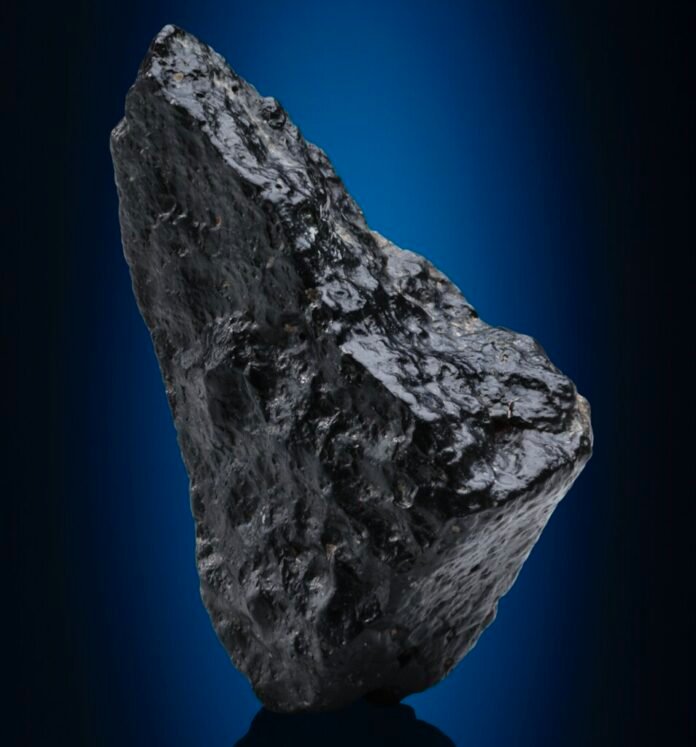A massive meteorite that slammed into what is now northwest Scotland nearly one billion years ago may have played a pivotal role in shaping Earth’s environment and supporting the rise of early life, according to new research published in Geology.
This discovery challenges previous estimates that dated the impact at 1.2 billion years ago, instead placing it 200 million years later — a revision that carries significant implications for understanding early microbial evolution and planetary development.
An Ancient Collision Reconsidered
The impact, preserved in a unique geological formation known as the Stac Fada Member, is now considered to be roughly 1 billion years old. This places it squarely within the same time frame as some of Earth’s earliest known land-based, non-marine microbial fossils, previously discovered in the surrounding Torridonian rock formations.
These Torridonian rocks — a prized geological archive — were once part of ancient lakes and river systems, home to eukaryotic microorganisms. These organisms, single-celled with internal structures, are the evolutionary ancestors of all modern plants and animals.
The new date raises compelling questions: How did this violent cosmic event influence the delicate ecosystems that had begun to form on land? Did it temporarily obliterate them, or paradoxically, create the conditions necessary for their future expansion?
Tracing the Impact Through Rock and Time
The Stac Fada Member is unlike any other rock unit in the Torridonian sequence. It contains shattered and melted rock fragments, compressed into layers by the force of the meteorite’s explosion. More tellingly, it houses shock-altered minerals — notably reidite and granular zircon — similar to those found at other famous impact sites like Chicxulub in Mexico (linked to the extinction of dinosaurs) and Sudbury in Canada.
Reidite forms only under extreme pressure, while granular zircon crystallizes in the high temperatures generated by massive impacts. Both act as geological timekeepers, resetting their internal clocks at the moment of impact.
“Although these minerals often bear the scars of heat and pressure,” the researchers explained, “by applying advanced mathematical modeling, we were able to extract a reliable impact age — placing it firmly at 1.0 billion years.”
This new estimate tightens the timeline, aligning the Stac Fada impact with early eukaryotic microfossils preserved elsewhere in the same geological sequence. It also coincides with a major mountain-building phase, indicating that the ecosystems of the time were coping with multiple environmental stressors simultaneously.
The Hidden Role of Meteorites in Supporting Life
While meteorite impacts are often viewed as purely destructive forces, they may have served as critical catalysts in Earth’s biological evolution.
This new study builds on earlier findings from Western Australia, where another ancient meteorite impact — the 3.5-billion-year-old North Pole impact — occurs in rocks containing stromatolites, some of the oldest fossils of microbial life.
Meteorites do more than punch holes in the crust. The heat and pressure they generate can fracture rocks, spark hydrothermal activity, and create crater lakes — all of which are prime environments for biochemical reactions. These conditions can concentrate clays, organic molecules, and phosphorus, the latter being an essential element for DNA, RNA, and cell membranes.
In the case of Stac Fada, the impact occurred in an environment already rich in life: river and lake systems teeming with microbial mats and sediment-dwelling communities. What makes this case exceptional is that the impact site preserved the exact ecological setting where early land-based life had begun to take root.
Life Interrupted — and Reborn
The aftermath of the meteorite strike was undoubtedly catastrophic. The high-energy ground-hugging flows that followed the impact would have swept across the terrain, disrupting local ecosystems and possibly wiping out microbial populations.
Yet over time, life recolonized the same region. As the shattered layers of rock settled and new sediments accumulated, non-marine microbial habitats re-established themselves. This sequence — destruction followed by recovery — is recorded in the same rocks that were affected by the impact.
“The Stac Fada deposits give us a rare window into both the devastation and resilience of early ecosystems,” the researchers said. “This duality allows scientists to explore how life responds to extreme environmental shocks — an increasingly relevant topic as humanity grapples with its own ecological crises.”
Rethinking Catastrophe
The study challenges the notion that meteorites are only harbingers of extinction. In certain contexts, they may be agents of innovation, triggering environmental changes that expand evolutionary possibilities.
The Stac Fada impact coincided with a dynamic period in Earth’s history. In addition to microbial life on land, mountain formation was reshaping the landscape, altering climate and erosion patterns. The convergence of these events might have forced microbial communities to adapt in ways that spurred biological complexity.
A Broader Cosmic Perspective
The idea that life on Earth was shaped — in part — by extraterrestrial influences is not new, but studies like this give it fresh support grounded in geological evidence. With advances in radiometric dating and mineral analysis, scientists can now revisit long-debated timelines and offer new insights into how planetary processes unfolded.
And as space agencies worldwide prepare missions to explore Mars, Europa, and other potentially habitable worlds, the role of impacts in enabling life is more relevant than ever. Craters on these alien landscapes may likewise harbor clues to past or present biology.
What Lies Ahead
The researchers stress that there is still much to uncover in the Torridonian rock sequence, and the revised date for the Stac Fada impact opens up new avenues for investigation.
Future work will likely focus on comparing microbial fossils before and after the impact, reconstructing the chemical environment of crater lakes, and exploring how eukaryotic life adapted to extreme stress.
What is clear, however, is that Earth’s history is not a smooth continuum, but one punctuated by collisions, upheavals, and comebacks — often driven by the unexpected visitors from space.
